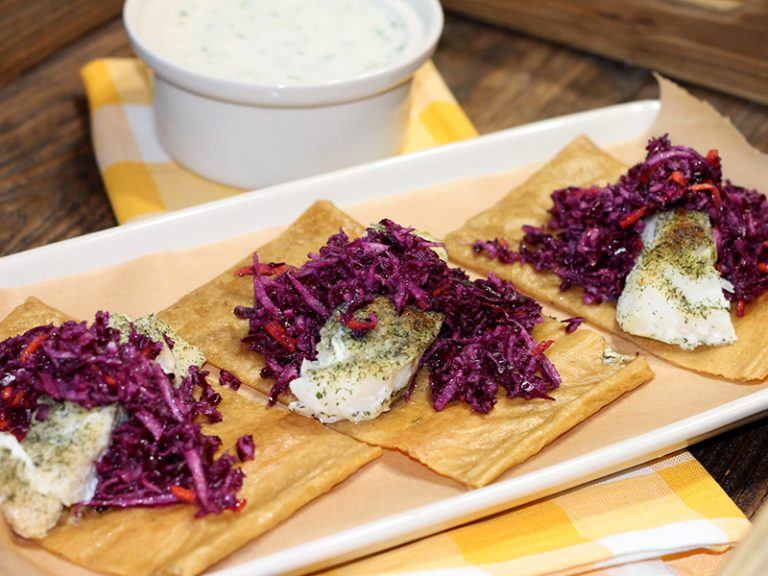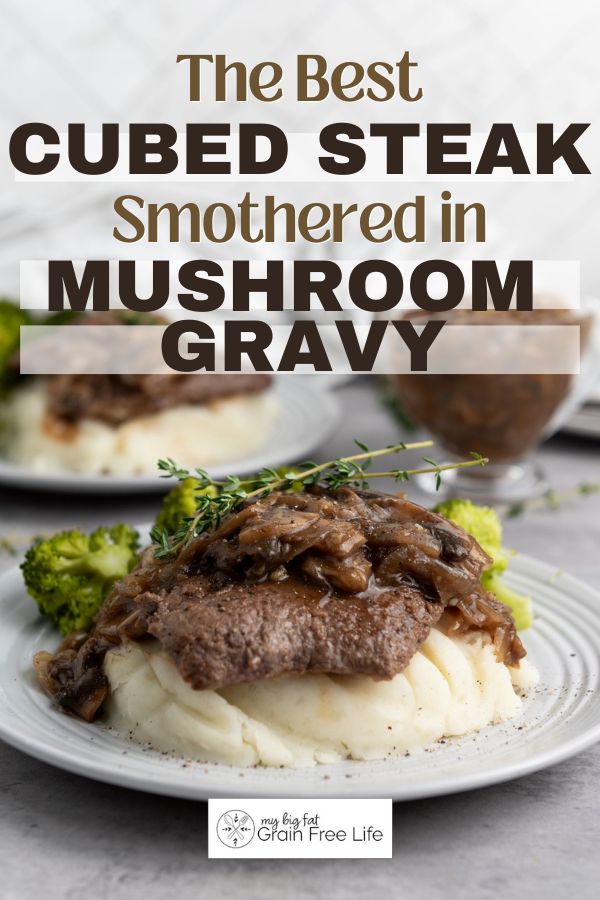The Best Vinaigrette Salad Dressing Recipes (17 Variations)
This post may contain affiliate links. If you make purchase after clicking a link, I may receive a commission at no extra cost to you.
Last Updated on November 25, 2023
A classic vinaigrette offers a perfect balance of flavors that can transform simple salads and dishes into culinary delights. Learn how to make homemade vinaigrette 17 different ways.
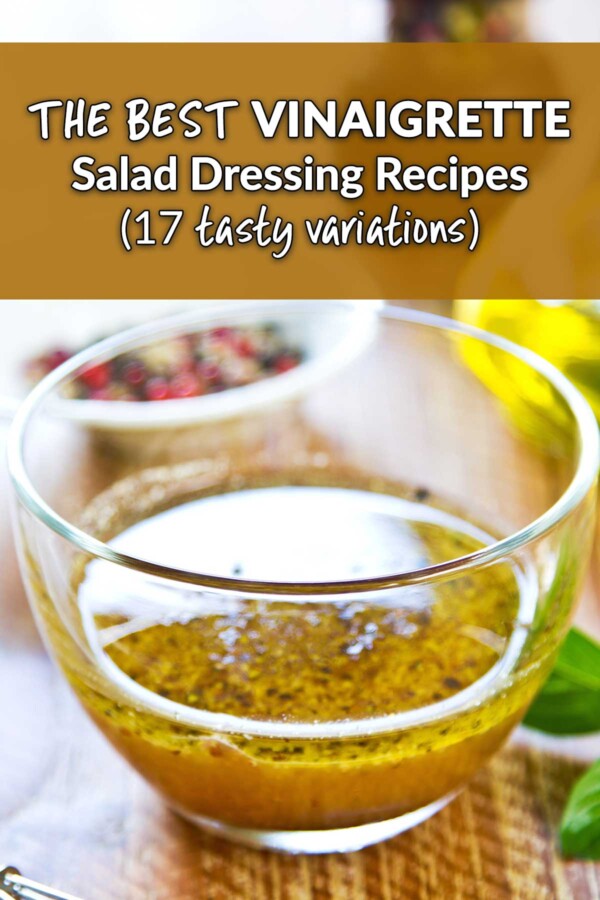
Vinaigrette
A vinaigrette is a type of dressing commonly used in salads and other dishes. It is made by emulsifying oil and vinegar together, along with other seasonings, to create a flavorful and tangy sauce.
Vinaigrettes are typically made with heart-healthy oils like olive oil or avocado oil. These oils are rich in monounsaturated fats, which can help lower bad cholesterol levels and reduce the risk of heart disease. Additionally, homemade vinaigrettes can be customized to include fresh herbs and spices that provide antioxidants and other beneficial compounds.
How Is a Basic Vinaigrette Made?
A basic vinaigrette typically consists of three main ingredients: oil, vinegar, and seasonings. The most common type of oil used is olive oil, which provides a smooth texture and rich flavor.
For the vinegar component, you can use various types such as balsamic vinegar, red wine vinegar, or apple cider vinegar. These vinegars add acidity and balance to the vinaigrette.
How to Make a Basic Vinaigrette
It’s easy to make your own dressing using a basic recipe and then adding in herbs and spices to enhance the flavors. Store-bought salad dressing is often full of additives, sugar, and preservatives. So, making homemade salad dressing is a much better option!
To make a basic vinaigrette, start by whisking together one part vinegar with three parts oil in a bowl or shaking them in a jar with a tight lid until they are well combined. Then add your desired seasonings according to taste preferences and whisk or shake again to incorporate everything evenly.
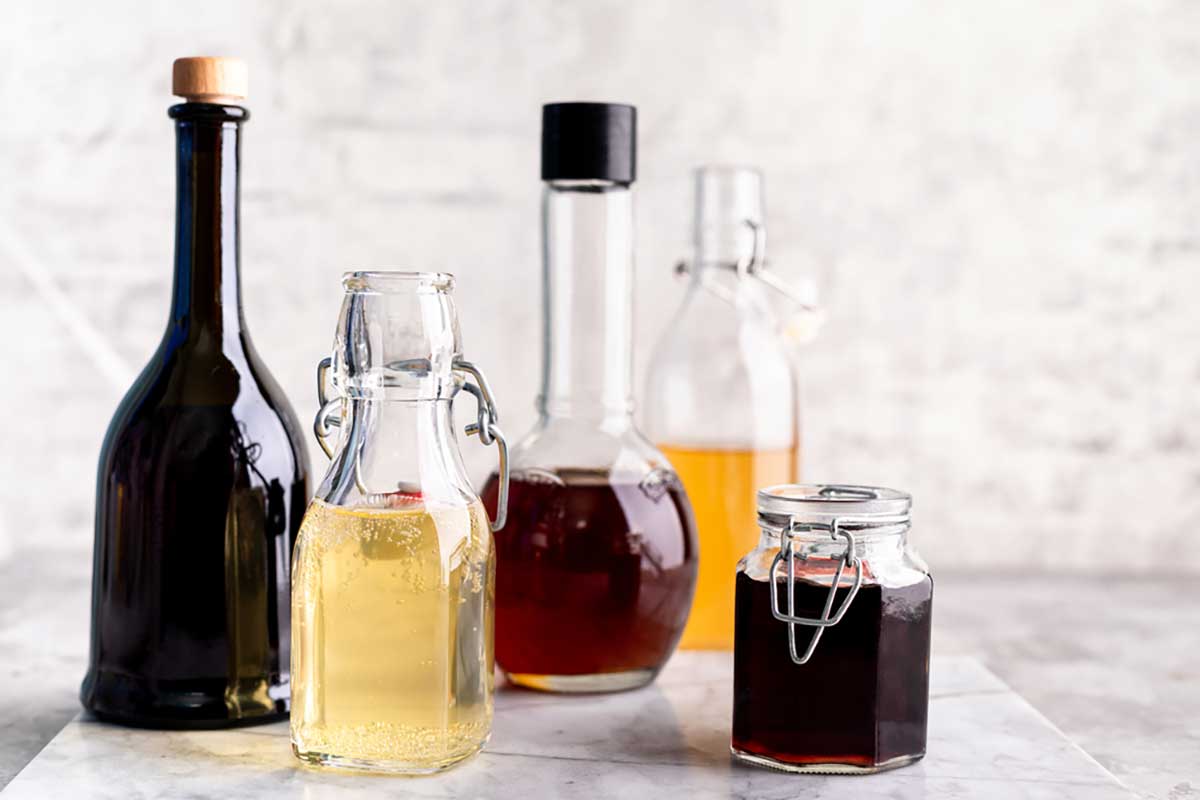
Vinegar Types For Dressings
You can use various types of vinegar to make a homemade vinaigrette. The variations in flavors of different vinegars allow for endless possibilities when creating vinaigrettes tailored to different dishes or personal preferences.
Balsamic Vinaigrette
Balsamic vinegar is known for its rich, sweet flavor and dark color. It adds a complex and slightly fruity taste to vinaigrettes. The longer the balsamic vinegar is aged, the more intense and syrupy it becomes, enhancing the depth of flavor in the dressing.
Red Wine Vinaigrette
Red wine vinegar has a tangy and robust flavor that pairs well with many ingredients. It adds a pleasant acidity to vinaigrettes, balancing out the flavors. The intensity of the red wine vinegar can vary depending on the type of red wine used in its production.
White Wine Vinaigrette
White wine vinegar offers a milder and slightly sweeter taste compared to red wine vinegar. It has a crisp and clean flavor profile that complements lighter salads. The choice of white wine used in making the vinegar can affect its overall taste.
Apple Cider Vinaigrette
Apple cider vinegar imparts a distinct fruity and slightly tart flavor to vinaigrettes. It adds a pleasant tanginess to salads and works well with both savory and sweet ingredients. Unfiltered apple cider vinegar may have a stronger apple flavor due to its sediment content.
Rice Vinaigrette
Rice vinegar is commonly used in Asian-inspired vinaigrettes, lending a delicate, mildly sweet, and tangy taste to dressings. It’s made from fermented rice and has a lighter acidity compared to other vinegars.
Champagne Vinaigrette
Champagne vinegar offers a light and delicate flavor that enhances the freshness of salads without overpowering other ingredients. Its mild acidity allows it to be versatile in various vinaigrette recipes.

Choosing a Vinegar Based on Flavors
Each type of vinegar brings its own unique characteristics to vinaigrettes:
- Balsamic vinegar adds depth, sweetness, and complexity.
- Red wine vinegar provides tanginess and robustness.
- White wine vinegar offers mild acidity with fruity undertones.
- Apple cider vinegar brings fruitiness along with tanginess.
- Rice vinegar contributes delicate sweetness without overpowering other flavors.
- Champagne vinegar adds lightness, crispness, and subtle fruitiness.

Best Oils For Making Vinaigrettes
- Extra virgin olive oil: This oil is a classic choice for vinaigrettes due to its rich flavor and health benefits.
- Avocado oil: Known for its high smoke point and neutral flavor, avocado oil is a versatile option for vinaigrettes.
- Walnut oil: Walnut oil adds a nutty and earthy flavor to your vinaigrette.
- Sesame oil: Toasted sesame oil brings a distinct, nutty flavor to your vinaigrettes. Be sure to use it sparingly as a little goes a long way. It works particularly well in Asian-inspired dressings.
Avoid using vegetable oil and hydrogenated oils that may be high in saturated fats, such as seed oils.
Learn more: What are Seed Oils?
13 Vinaigrettes to Make
If you’d like to make a homemade dressing, here are 10 different ways you can make a vinaigrette.
Italian Dressing Vinaigrette
This dressing is my go-so for salads, and I also use it in my Zucchini Pasta Salad Recipe.
- 1/2 C olive oil
- 1/4 C apple cider vinegar
- 2 TBSP lemon juice, freshly squeezed
- 2–3 cloves of garlic
- 2 tsp dried oregano
- 1/2 tsp dried parsley
- 1/2 tsp raw honey (optional)
- 3/4 tsp sea salt (more to taste)
Instructions: Start by adding the apple cider vinegar, lemon juice, and all other ingredients except the oilive oil. Whisk until combined and then slowly add the oilve oil, combining all ingredients. This basic vinaigrette recipe tastes great over leafy greens and can be used in place of Italian dressing for various recipes.
Note: If you are able to have nightshade foods, crushed red peper flakes go great in this simple salad dressing.

Classic Balsamic Vinaigrette
- 3 tablespoons balsamic vinegar
- 1/2 cup extra-virgin olive oil
- 1 teaspoon Dijon mustard
- salt and black pepper to taste
Instructions: In a small bowl, whisk together the balsamic vinegar, Dijon mustard, salt, and pepper. Slowly drizzle in the olive oil while continuing to whisk until well combined. This balsamic dressing pairs well with salads containing fresh greens, tomatoes, and cheese.

Honey Mustard Vinaigrette
- 2 tablespoons Dijon mustard
- 2 tablespoons honey
- 2 tablespoons apple cider vinegar
- 1/4 cup extra virgin olive oil
Instructions: In a small bowl, whisk together the Dijon mustard, honey, apple cider vinegar until smooth. Slowly drizzle in the olive oil while continuing to whisk until well combined. This vinaigrette is great for dressing salads with mixed greens, chicken breast, and sliced apples. Add a pinch of rosemary for some extra flavor.

Raspberry Walnut Vinaigrette
- 1/4 cup raspberry vinegar
- 1/4 cup walnut oil
- 1 tablespoon honey
- salt and pepper to taste
Instructions: In a small bowl, whisk together the raspberry vinegar, honey, salt, and pepper until well combined. Slowly drizzle in the walnut oil while continuing to whisk until emulsified. This vinaigrette pairs beautifully with spinach salads topped with fresh raspberries, goat cheese, and candied walnuts.
Raspberry Vinaigrette
- 2 tablespoons raspberry vinegar
- 1/4 cup extra virgin olive oil
- 1 tablespoon honey
- 1 teaspoon Dijon mustard
- Salt and pepper to taste
Instructions: Whisk together the raspberry vinegar, honey, Dijon mustard, salt, and pepper in a small bowl. Slowly pour in the olive oil while whisking continuously until emulsified. This vinaigrette has a fruity tang and is perfect for salads with mixed berries or goat cheese.

Asian Sesame Vinaigrette
- 3 tablespoons rice vinegar
- 1 tablespoon soy sauce (or coconut aminos)
- 1 tablespoon sesame oil
- 1 tablespoon honey
- 1 clove garlic (minced)
- salt and pepper to taste
Instructions: In a small bowl, whisk together the rice vinegar, soy sauce, sesame oil, honey, minced garlic, salt, and pepper until well combined. This vinaigrette is perfect for dressing Asian-inspired slaw or noodle salads.
Apple Cider Vinaigrette
- 3 tablespoons apple cider vinegar
- 1/4 cup extra virgin olive oil
- 1 tablespoon honey
- 1 teaspoon whole grain mustard
- Salt and pepper to taste
Instructions: Combine the apple cider vinegar, honey, whole grain mustard, salt, and pepper in a small bowl. Slowly add the olive oil while whisking until emulsified. This vinaigrette has a slightly sweet and tart taste that goes well with mixed greens or roasted vegetables.
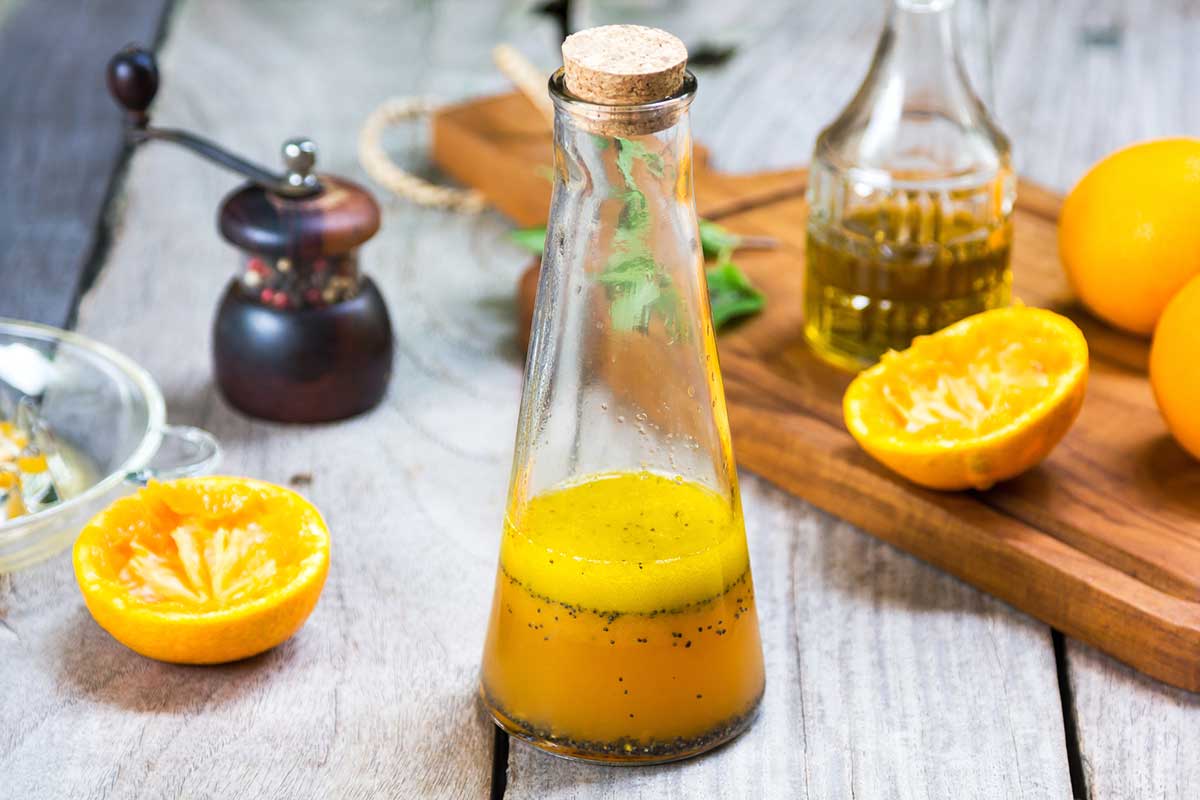
Orange Ginger Vinaigrette
- Juice of 2 oranges
- 2 tablespoons rice vinegar
- 1 teaspoon freshly grated ginger
- 1/4 cup extra virgin olive oil
- salt and pepper to taste
Instructions: In a small bowl, whisk together the orange juice, rice vinegar, grated ginger, salt, and pepper. Slowly drizzle in the olive oil while continuing to whisk until well combined. This vinaigrette pairs well with mixed greens topped with grilled shrimp or chicken.
Red Wine Vinaigrette
- 3 tablespoons red wine vinegar
- 1/2 cup extra virgin olive oil
- 1 clove garlic, minced
- 1 teaspoon dried oregano
- Salt and pepper to taste
Instructions: Whisk together the red wine vinegar, minced garlic, dried oregano, salt, and pepper in a small bowl. Slowly pour in the olive oil while whisking until well blended. This vinaigrette has a bold flavor profile that pairs perfectly with Mediterranean-inspired salads or grilled meats.
White Wine Vinaigrette
- 3 tablespoons white wine vinegar
- 1/2 cup extra virgin olive oil
- 1 tablespoon fresh lemon juice
- 1 teaspoon Dijon mustard
- Salt and pepper to taste
Instructions: In a small bowl, whisk together the white wine vinegar, fresh lemon juice, Dijon mustard, salt, and pepper. Slowly drizzle in the olive oil while whisking continuously until emulsified. This vinaigrette has a light and refreshing taste that complements salads with delicate greens or seafood.

Sherry Vinaigrette
- 3 tablespoons sherry vinegar
- 1/4 cup extra virgin olive oil
- 1 tablespoon minced shallots
- 1 teaspoon Dijon mustard
- Salt and pepper to taste
Instructions: Combine the sherry vinegar, minced shallots, Dijon mustard, salt, and pepper in a small bowl. Slowly add the olive oil while whisking until emulsified. This vinaigrette has a rich and slightly sweet taste that complements salads with roasted vegetables or blue cheese.

Maple Dijon Vinaigrette
- 2 tablespoons Dijon mustard
- 2 tablespoons maple syrup
- 2 tablespoons apple cider vinegar
- 1/4 cup extra virgin olive oil
- salt and pepper to taste
Instructions: In a small bowl, whisk together the Dijon mustard, maple syrup, apple cider vinegar, salt, and pepper until well combined. Slowly drizzle in the olive oil while continuing to whisk until emulsified. This vinaigrette pairs well with fall-inspired salads containing mixed greens, roasted butternut squash, cranberries, and goat cheese.
Miso Vinaigrette
- 2 tablespoons white or yellow miso paste
- 2 tablespoons rice vinegar
- 2 tablespoons soy sauce
- 1 tablespoon honey or other natural sweetner, such as maple syrup
- 1 teaspoon grated ginger
- 1 clove garlic, minced
- 4 tablespoons olive oil
Instructions: In a small bowl, whisk together the miso paste, rice vinegar, soy sauce, honey, grated ginger, and minced garlic until well combined. Next, slowly drizzle in the olive oil while whisking continuously until the dressing emulsifies and thickens slightly.
Miso vinaigrette has a savory umami flavor. It complements green salads beautifully and can be used as a dressing for mixed greens or Asian-inspired salads containing ingredients like cucumber, carrots, bell peppers, edamame beans, or seaweed.
Vinaigrette-style Dressings Without Vinegar
These dressings use citrus as the acid instead of different vinegars.
Lemon Herb Dressing
- Juice of 1 lemon
- 1/4 cup extra virgin olive oil
- 1 tablespoon chopped fresh herbs (such as basil, parsley, or thyme)
- salt and pepper to taste
Instructions: In a small bowl, whisk together the lemon juice, chopped herbs, salt, and pepper. Slowly drizzle in the olive oil while continuing to whisk until well combined. This dressing is perfect for drizzling over grilled vegetables or roasted chicken.
There are loads of benefits of calamansi; consider swapping calamansi juice for lemon juice in this recipe.
Creamy Avocado Lime Dressing
- 1 ripe avocado (any type of avocado will work)
- Juice of 2 limes
- 2 tablespoons Greek yogurt (or use coconut yogurt)
- 2 tablespoons extra virgin olive oil
- salt and pepper to taste
Instructions: In a blender or food processor, combine the ripe avocado, lime juice, Greek yogurt, salt, and pepper. Blend until smooth. Slowly drizzle in the olive oil while continuing to blend until creamy and well combined. This dressing is excellent on green salads with sliced avocado, cherry tomatoes, and grilled chicken.
Cilantro Lime Dressing
- Juice of 2 limes
- 1/4 cup chopped fresh cilantro leaves
- 2 tablespoons honey
- 1/4 cup extra virgin olive oil
- salt and pepper to taste
Instructions: In a small bowl, whisk together the lime juice, chopped cilantro, honey, salt, and pepper. Slowly drizzle in the olive oil while continuing to whisk until well combined. This dressing is perfect for Mexican-inspired salads or as a marinade for grilled fish.
Garlic Parmesan Dressing
- 2 cloves garlic (minced)
- 1/4 cup grated Parmesan cheese
- 2 tablespoons lemon juice
- 1/4 cup extra virgin olive oil
- salt and pepper to taste
Instructions: In a small bowl, whisk together the minced garlic, grated Parmesan cheese, lemon juice, salt, and pepper. Slowly drizzle in the olive oil while continuing to whisk until well combined. This dressing is delicious on Caesar salads or as a marinade for grilled chicken.
Vinaigrette Variations and Add-ins
Various seasonings can be added to enhance the flavor profile of vinaigrettes. These may include salt, pepper, Dijon mustard, dried jalapenos for a spicy kick, granulated garlic, fresh herbs like basil or thyme, honey for sweetness, or shallots for a mild onion-like flavor.
Adding capers can also give your vinaigrettes a nice tangy addition. You can also add red pepper flakes to give it a little punch of spice. Using citrus fruit peels by zesting them into your vinaigrette can add a nice tang.
How to Store Vinaigrettes
- Use a clean and airtight container: Transfer the vinaigrette into a clean Mason jar or airtight container before storing it in the fridge.
- Label and date: It is helpful to label the container with the type of vinaigrette and the date it was prepared.
- Keep away from direct light and heat: Store the vinaigrette in a cool and dark part of your refrigerator, away from direct sunlight or heat sources.
- Shake well before use: Prior to using the stored vinaigrette, give it a good shake to recombine any separated ingredients.
Ways to Use Vinaigrettes
- Salad Dressing: Vinaigrettes are most commonly used as dressings for salads. They add a burst of flavor and tanginess to fresh greens, vegetables, and even fruits. The acidity of the vinaigrette helps to balance the flavors in the salad and adds a refreshing touch.
- Marinades: Vinaigrettes can be used as marinades for meats, seafood, and vegetables. The acidic nature of the vinaigrette helps to tenderize proteins while infusing them with flavor. Marinating with a vinaigrette can enhance the taste and juiciness of your dishes when grilled, baked, or roasted.
- Roasted Vegetables: Tossing roasted root vegetables in a vinaigrette before or after cooking can elevate their taste and bring out their natural flavors. The acidity in the vinaigrette cuts through the richness of roasted vegetables and adds brightness to each bite.
- Sandwiches and Wraps: Use vinaigrettes as spreads for sandwiches or wraps instead of traditional condiments like mayonnaise or mustard. This will add an extra layer of tangy flavor while keeping your meal light and refreshing.
Store-bought Vs Homeade Vinaigrettes
Homemade vinaigrettes are better for you than store-bought dressings for several reasons:
- Control over ingredients: When you make your own vinaigrette, you have complete control over the ingredients used. You can choose high-quality oils, such as olive or avocado oil, which are rich in heart-healthy monounsaturated fats. Additionally, you can avoid artificial additives and preservatives commonly found in store-bought dressings.
- Lower sugar content: Many store-bought dressings contain added sugars to enhance flavor. By making your own vinaigrette, you can control the amount of sugar or even omit it altogether.
- Customizable flavors: Homemade vinaigrettes allow you to experiment with a variety of flavors by using different combinations of herbs, spices, vinegars, and citrus juices.
- Freshness and nutrient retention: Store-bought dressings often go through processes like pasteurization and prolonged shelf life preservation methods that can compromise the freshness and nutritional value of the ingredients. Homemade vinaigrettes, on the other hand, can be made with fresh ingredients, ensuring maximum flavor and nutrient retention.
- Cost-effective: Making your own vinaigrette at home is generally more cost-effective compared to buying pre-packaged dressings from the store.
FAQ About Vinaigrettes
Still have some questions about making your own vinaigrette?
Is Vinaigrette A Healthy Dressing?
Homemade vinaigrettes are a healthier alternative to store-bought dressings as they allow you to control the quality and quantity of ingredients used. They are typically made with heart-healthy oils like olive oil, which provide essential fatty acids and antioxidants.
Additionally, homemade vinaigrettes often contain fresh herbs and spices, adding flavor without relying on excessive sodium or preservatives.
How Does Vinaigrette Taste?
Vinaigrettes offer a delightful balance of flavors. They can be customized to suit your preferences by adjusting the acidity, sweetness, or tanginess. The use of fresh ingredients ensures bold flavors that elevate any salad or dish they are paired with.
Is Vinaigrette Supposed To Be Sour?
Yes, a vinaigrette is supposed to have a tangy and slightly sour taste. The acidity of vinegar is what gives vinaigrette its characteristic sour flavor. While vinaigrettes should have a pleasant level of sourness, it shouldn’t be overwhelmingly acidic or mouth-puckeringly tart.
A well-made vinaigrette strikes a delicate balance between acidity and other flavors, resulting in a refreshing and flavorful dressing.
How Do You Cut The Bitterness Out Of A Vinaigrette?
If you find your vinaigrette to be too bitter, there are several ways to cut the bitterness. One option is to add a touch of sweetness by incorporating honey, maple syrup, or a small amount of fruit juice. Another method is to balance the bitterness with acidity by adding more vinegar or citrus juice.
What Thickens A Vinaigrette?
A common method used to thicken a vinaigrette is using mustard as an emulsifier. The natural thickening properties of mustard help bind the oil and vinegar together. Alternatively, you can blend in mayonnaise, yogurt, or even avocado for a creamy texture.
Do You Add Oil Or Vinegar First In A Vinaigrette?
The order in which you add oil and vinegar depends on personal preference and desired consistency. Some prefer to start with vinegar and slowly whisk in the oil for a smoother emulsion. Others find it easier to begin with oil and gradually incorporate the vinegar while whisking continuously until well blended.
Final Summary
The next time you make your favorite green salad or spinach salad, try whipping up a basic vinaigrette dressing using a high-quality oil, vinegar, fresh garlic, and seasonings to your personal taste instead of buying one at the store. I promise, you will thank yourself later!




